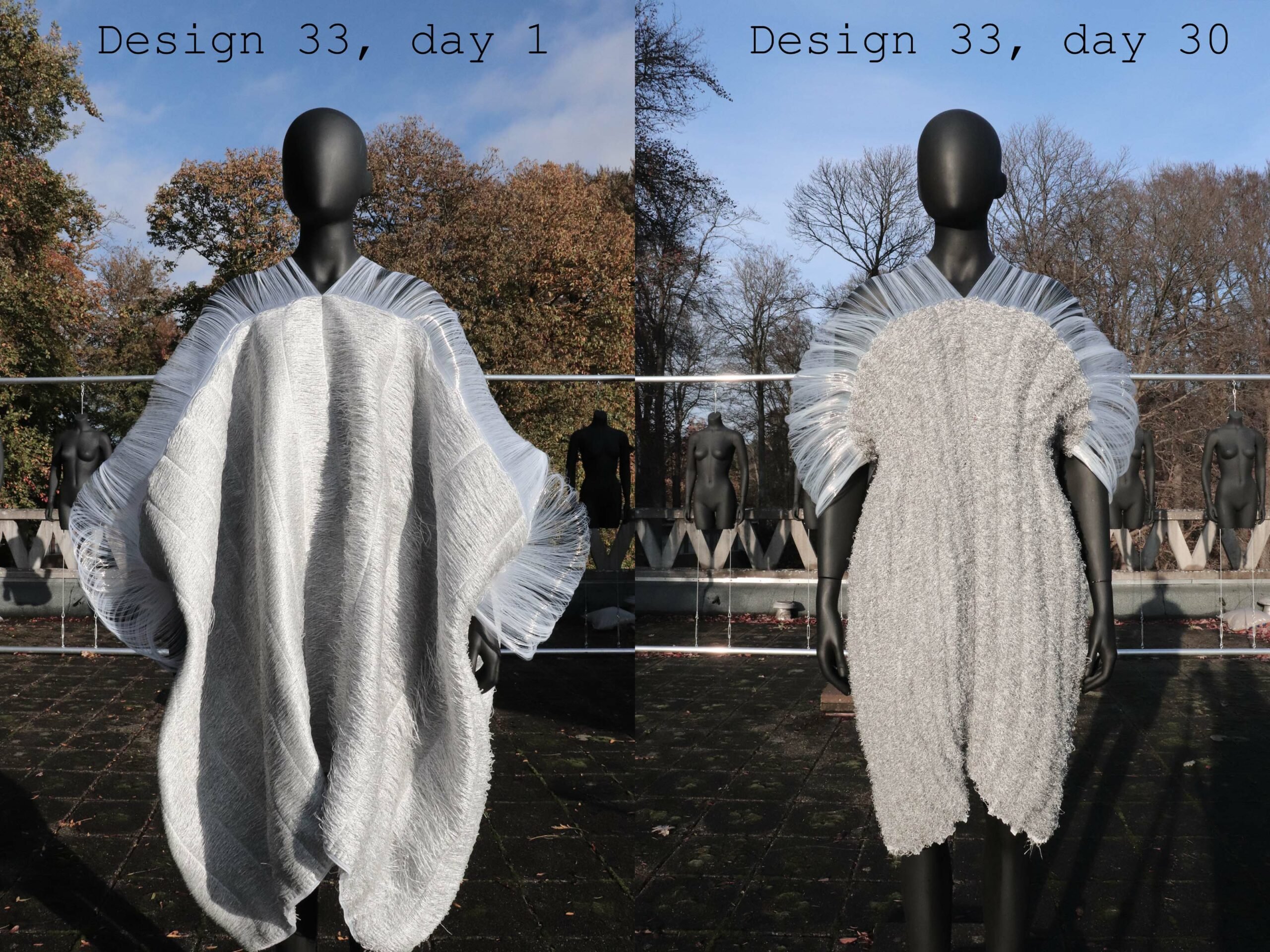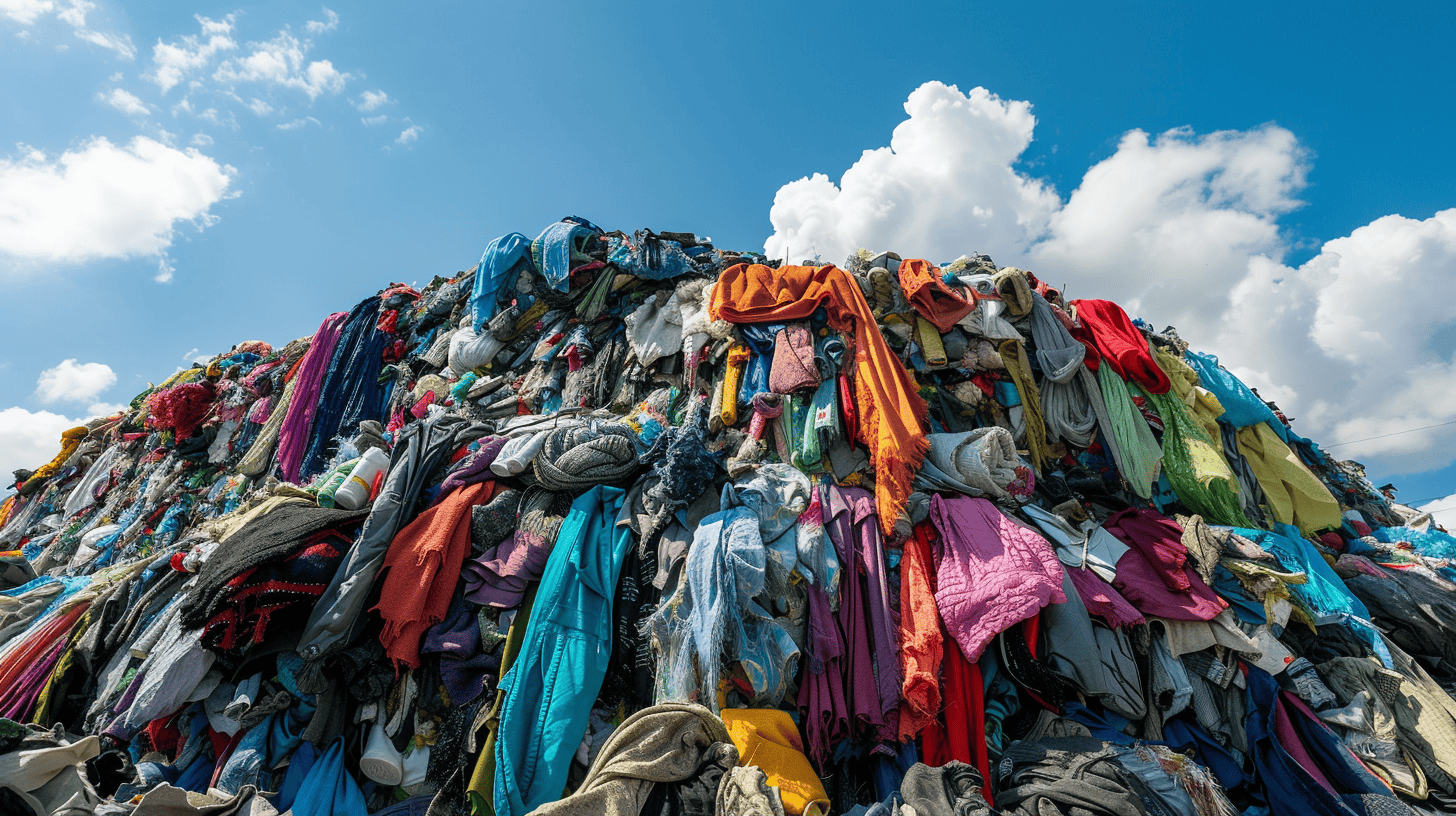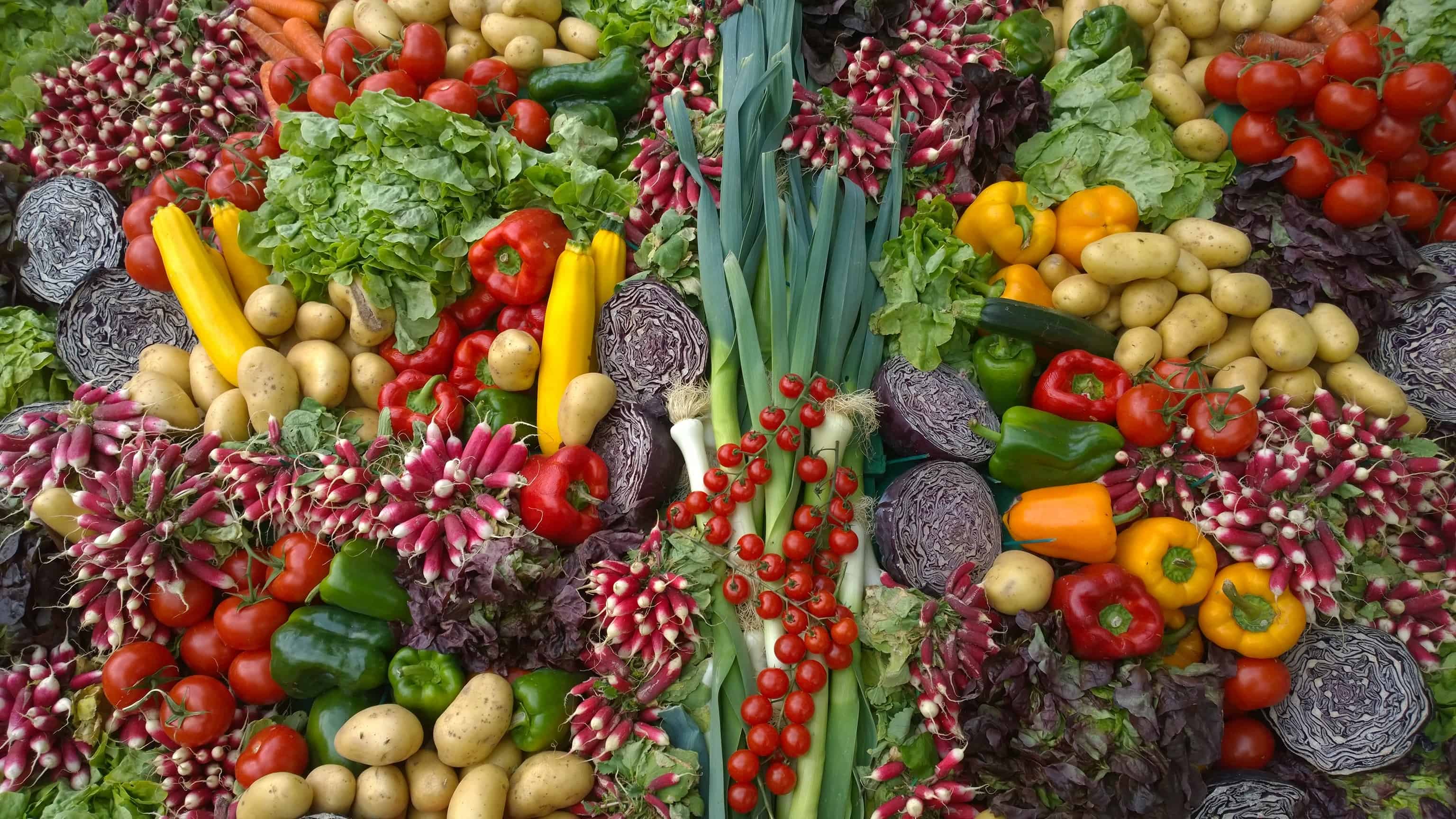
With a novel approach, a textile architect wants to revolutionize the traditional supply chain, making 2D cuts, scissors and thread and needle obsolete. The material develops its own cutting technique, so to speak, and transforms from 2D to 3D. There is no waste, as in conventional garment manufacturing. The concept comes from biomimicry in which 2D elemental shapes dissolve into complex 3D forms. Montes drew inspiration for the design from the natural growth process of pine cones. In particular, it was the folding lines of pine cones that he integrated into his textile architectures on both micro and macro levels, but also the way their shape changes due to weathering.

At first, his work seems quite unspectacular. Montes makes rectangles with openings for the head and arms. The potential for shaping is in the architectural fabric construction that contains the plan whereby it is the fibers, or rather the technical filaments, that do most of the work. The challenge is to create a filament structure that follows the material and the goal of the experiment and produces surprisingly beautiful shaping, according to the researcher.
The adaptive Archi filament
Working with the Horizon 2020 co-creation tech platform Re-FREAM in Linz, Austria, Montes had the opportunity in 2020/21 to advance research and development for the engineered filament. He worked with European technology partners to develop yarn constructions and sustainable coating techniques. The so-called adaptive Archi filament was developed in cooperation with Haratech in Linz, Austria. Two categories of fibers were used in the trials: recycled plastic waste from the oceans and bioplastic (PLA).
Also interesting: Viennese researchers agree: Recyclable textiles do not justify proliferation of product lines
Self-folding materials enable the formation of complex shapes
The properties of the yarn need to be layered from the inside of the yarn to the outside. This is supposed be achieved through the use of 3D printing techniques. But since the thinnest fiber versions broke, it ended up being more of a conventional yarn manufacturing process after all.

Shaping mechanism
The core of the adaptive Archi filament features a movable, adaptable yarn that is laid in spirals and coated with a water-soluble filler made from algae starch. In this construction, the yarn can be processed on conventional equipment such as Jacquard looms and knitting machines. The idea is to initially block the forming mechanisms (the spirals) within a solid bio-plastic layer. When it rains, these water-soluble layers of algae starch melt and the woven and knitted structures begin to take shape through the released spirals.
The biggest challenge in producing the Archi adaptive filament is finding the right balance between the materials and the coating. ll filaments and yarns must be kept within the coating and the coating must not burst or break. Everything inside must remain frozen, Montes said in his open-source plan.
Water-soluble coating
The coating for the adaptive Archi filament was developed jointly with the AITEX Institute of Materials Technology in Alcoy/Valencia and the Wood K Plus research facility in Linz, Austria using melt coating and dip coating technologies. Dip coating, which was applied jointly with AITEX, has the advantage of using a low-coating temperature and can therefore be applied to several types of material. The disadvantage is a lengthy production process. Nevertheless, the principle works and the research goal was achieved, even if further research is needed.
Wood K Plus in Linz applied a melt coating technique that has a shorter production time but requires a high melting temperature. This limits the range of materials that can be used. It cannot be applied to heat-sensitive materials. The strength of the technology lies in its greater conversion power, meaning the adaptive filament is more malleable. However, it has not reached the technical level required to create a prototype.
Also interesting: A 3-dimensional approach could revolutionize fashion production
The design follows the material
The materials were knitted and woven in collaboration with TextielLab Tilburg. Woven fabrics consist of a vertically running warp and a horizontally inserted weft. Montes uses monofilament for the warp and variable sustainable yarns for the weft, such as Seacell silk yarns dyed with algae pigments. This combination causes friction and results in dynamic shapes under varying meteorological conditions, such as rain, high winds or drought.
While Montes experimented with woven fabrics for the first six years of his project, he moved on to knitting in Re-FREAM with TextielLab Tilburg. Knitting is more challenging than weaving in that it requires a filament that is intact throughout. If a thread breaks or a hole appears, the entire garment must be discarded. In the future, he hopes to combine the two techniques.
Shaping through the weather
The subsequent design follows material experiment ran for six months. A total of 66 Marinero designs were produced, each of which was exposed to outdoor weather conditions for 30 days, taking on dynamic forms under the influence of rain, strong winds and sun. The outdoor installations were designed in collaboration with artist Bart Nijboer. Two models showed extraordinary results: one developed a particularly dramatic form and another a good balance between all the yarn prototypes developed and the customized effect.
Immediately commercially viable
The extensive experimentation with Wood K Plus resulted in a filament that is textured and looks as if it is covered with a delicate film of water. It is not convertible, but develops a fascinating crystal-like optical effect in woven and knitted fabrics. A special machine had to be built for the production of the so-called BioTex Archi-Fil. As a result, it can now be commercialized. It will be on display and available for purchase for the first time in June 2022 at the Techtextil trade fair in Frankfurt.
The Marinero project is open source and has been published on the main page of studioadaptiveskins.com.
Other cooperation partners within RE-FREAM were Johannes Kepler University Linz, Empa Swiss Federal Laboratories for Materials Science and Technology St. Gallen and Wageningen University Research.
Also of interest: Citrus fabric gives fashion industry a vitamin boost







